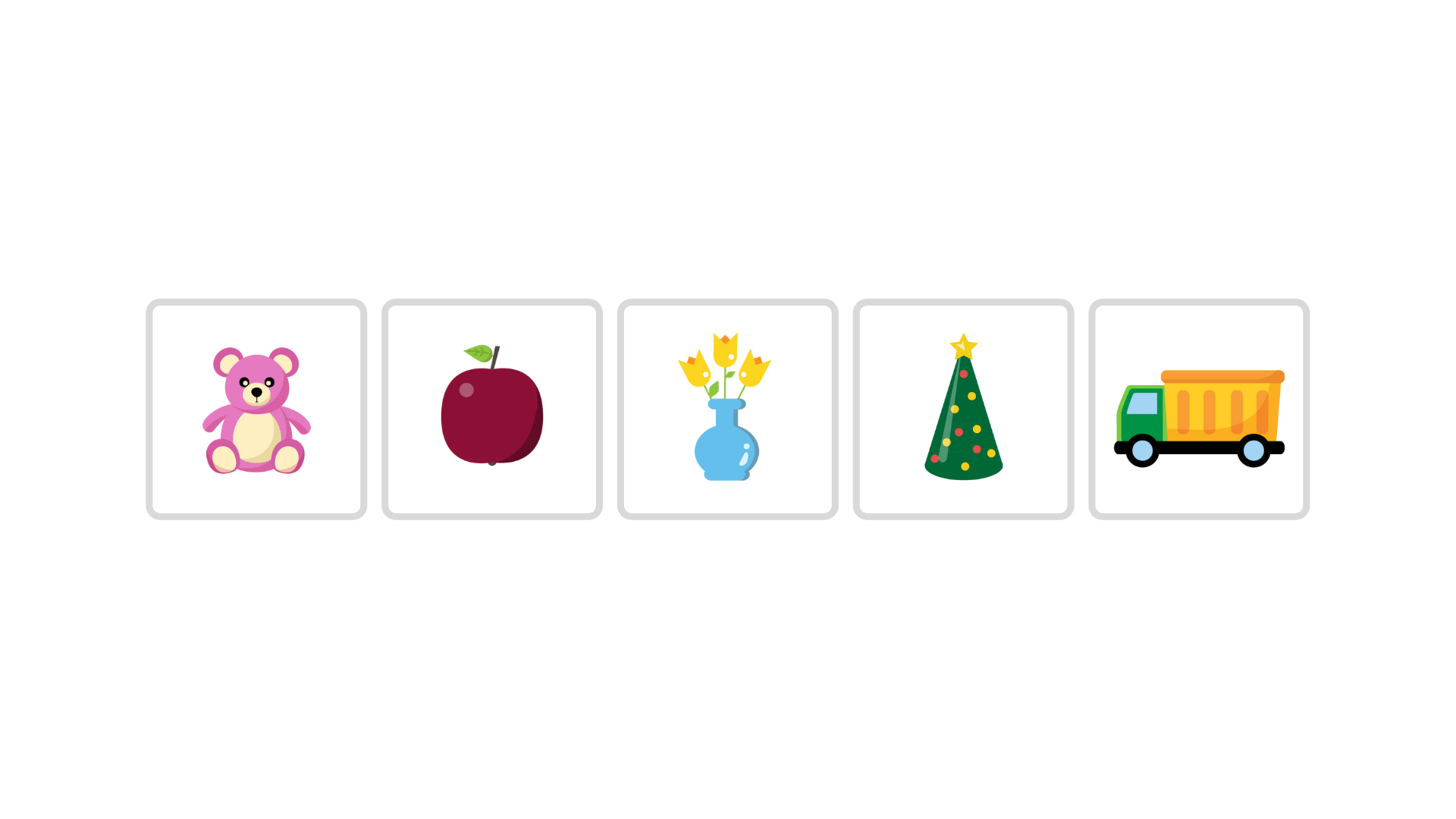Tips on how to use this exercise at home and at school.
Early math concepts
This exercise focuses on orientation in a row. Orientation in a series is a partial skill, but it is the basis for future orientation in a number series.

Why is this exercise important?
Passive understanding of spatial relationships (what is in the last picture, what picture is behind the first one, what is in between, etc.) and active accurate use of these concepts is important not only in natural situations but also in the future in number line orientation and geometry.
Who is the exercise suitable for?
This exercise generally belongs in preschool or early school play. In addition to concepts expressing spatial relationships, it also develops the child's language skills.
Methodological recommendations
Either read aloud the instructions, play them from the app or let the child read them by themselves.
The images will be displayed on the screen from left to right, which determines their order. The child uses the instructions to clarify and reinforce the concepts of before, after, between, in the middle, just after, just before, etc.
If they make a mistake, they have a chance to correct themselves. However, they have to click the wrong picture back (click on it again to remove the picture label). Lead the children to describe their procedure and explain why they are doing this.
The app settings allow you to set up different lengths of 5, 7 or 9 objects.
Tips for similar activities outside the app
We can describe cars stopped at a red light or parked in a line. (Example: Which car is closest to ours? What colour is the car that is first in line in the parking lot? Tell me, what cars are standing between the yellow and blue cars?)
You can also build a line of figures or toys and the child will point to the correct ones, following your instructions. (Example: Which figure is between Elsa and the frog? Which toys are behind the teddy bear? What is the name of the bear in front of the teddy bear?)
The whole family can also get involved. All members will stand in a line and the child will describe who is behind whom, who is first, last, in between, in the middle, etc.